If you would like an audio tour of this site just click the play icon below.
This is Close ny Chollagh - a Manx name meaning 'The Enclosure of the Stallion', though no one knows why it's called that.
The main feature of the site on the east of Bay ny Carrickey close to Scarlett is a large mound which is artificial, but there is part of a natural gully round the side and maybe over the past two thousand years there’s been some erosion on the sea side meaning that the gully once surrounded the whole site.
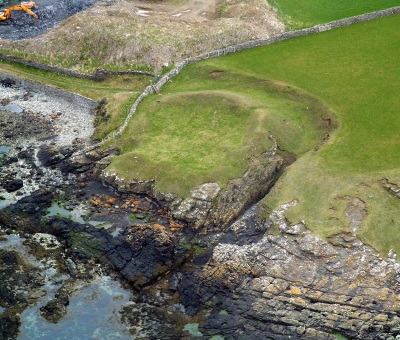
Centuries of blown soil and grass seed have covered up the treasures that lie beneath and it’s now impossible to see what was once here.
The site was dug by archaeologists in the 1950s and what they found was quite astonishing.
First, there was a massive stone rampart, some nine metres in width at its base, and rising at least to the height of the current mound but possibly higher, and there may even have been a fence of wooden stakes along its top. The ditch at the bottom of the mound was much deeper than it appears today because now it’s filled up with soil - so the whole effect would have been even more impressive. But what were these defences for?
Well, in the centre of the site was found a small group of roundhouses. There were three, maybe four huts, their stone bases still intact with the hearths in the middle and a marvellous system of drains.
The photographs from the dig show just how beautifully the stone walls were built. It’s not easy to date the site but it’s thought its main occupation was in the Iron Age, which would put it about 500BC – two and a half thousand years ago. Though there was some evidence that it might have been even older than that.
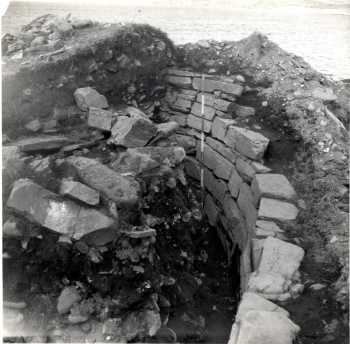
The stone used was the local limestone, but it’s been carefully prepared and dressed, and shows a high degree of skill and care.
Looking at the plan drawn up by Peter Gelling, who dug this site, you can see two of the huts, snugly sitting together. The hearth is in the centre and has a main drain running from it, with one from the left hand side of the hut, and another from the right hand side joining the central one just before the doorway.
The drains were lined with stone and covered with small slabs, so whatever they carried was well hidden under the floor.
The huts were quite sizeable. One of them was nearly seven metres across.
Peter Gelling also found traces of a completely different building in the enclosure – a small rectangular building of a much later period. Possibly a Viking Longhouse or an animal byre. It seems it was occupied long after the round houses were abandoned and fell into disrepair.
If you’d approached this complex from the side, it would have presented quite a snug and well-protected homestead.
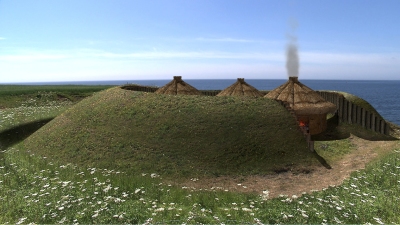
No pottery was found here, but that’s common in Iron Age sites – people were probably using wooden bowls, and indeed iron pots, but we know quite a bit about what these people ate.
We know this because hundreds of bones were found during the excavation and they included those of cattle, sheep, pigs, horses, chicken, edible crabs and huge numbers of limpets.
They didn’t find any dog bones, but they did find fossilised dog faeces - no doggie bags in those days - so at least they didn’t eat their dogs, like they did the horses, and they found one hedgehog – one can only assume that it didn’t go down very well.
The big mystery though, is why the people who lived here suddenly left and why it was hundreds of years before it was occupied again. A brooch, dating from about 50AD, was discovered on the top of the rubbish dump, meaning, after that time, there was no one here.
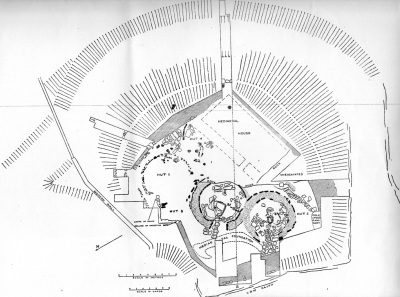
There are lots of theories – there’s even one concerning what was happening over the sea in Britain - the Roman occupation.
There aren’t any Roman remains on the Island, but it’s difficult to believe they never came here, after all they were sailing up and down the English and Welsh coasts and would certainly have seen the Island.
Some have speculated that one day the residents of Close yn Chollagh looked out and saw Roman galleys making for the shore, and they were taken as slaves, and that was the end of them.
But there could be a completely different theory – because round houses discovered inland by Great Meadow were shown to be lived in just at the time that these fell out of use. Could it be that these people simply moved?
So, despite the dig, many questions remained unaswered about the site: precisely how long was it occupied for, why was it abandoned, why was it so heavily fortified when other round houses from a similar period nearby weren’t?
One thing is certain, walking past it today you would have no idea what is hidden underneath the mound.
If you'd like to read the original report of the archaeological dig, then click below:
Don't forget to bookmark this page in case you want to view it again later.
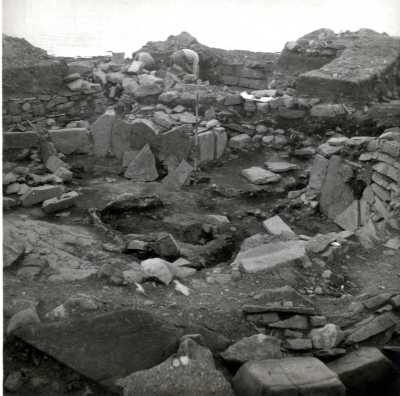
View this video to learn more about Close ny Chollagh
View a map of other places on the Island